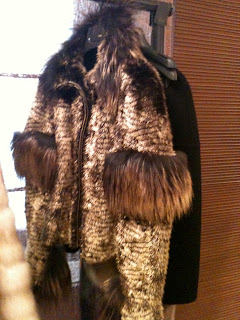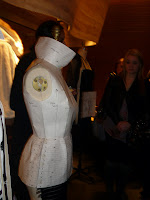As part of our second year on FMB we visited the core luxury Italian fashion houses, most notably Fendi. Starting off in 1925 as a small fur and leather goods store, Fendi has transformed itself into a multinational luxury status brand with Karl Lagerfield as its creative director. Just seconds from the famous Spanish steps lays Fendi’s flagship store is in keeping with Italian culture and tradition on the outside, occupying a building that used to be owned by a famous Italian family. In 2005 the architect Peter Marino celebrated Fendi’s 80th anniversary by unveiling its new flagship store playing on the brands tradition and heritage, still keeping the iconic chandelier in the stairway.
The layout of the store plays homage to the brands key USP’s; with a dedicated room to their iconic fur coats where we were shown how the different pieces of fur materials were selected by hand based on their shape and colour, then sewn together onto a mannequin shaped to the consumers body match perfectly. We also got to try on some of the runway jackets, even the most unique 120,000 euro one where the fur was laced with gold! As you walk into the store you are greeted by a large room dedicated to leather handbags and accessories, another of Fendi’s USP’s. The latest of their most sought after handbags is the “peekaboo”, which often creates a fuss when customers are told that they have to wait several months for it to be handmade for them. As well as having it made in different materials and colours, customers can get a personal message etched inside, all of which conveys Fendi’s understanding of its status in the luxury goods market; it is not always the price tag that is most significant, it is the exclusiveness of their unique product.
Visiting this fashion house has lead us to a better understanding of how the luxury market runs behind consumer eyes and how they target potential consumers with their unique goods. Additionally, we can see how they use their strong sense of heritage to their advantage, how playing on their most prestigious aspects such as fur and the peekaboo bag can keep consumers coming back for more, whatever the price tag!
























